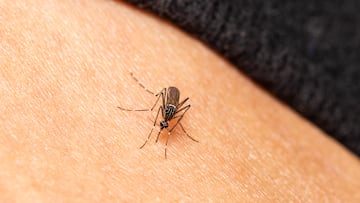Mosquitoes in Iceland? Scientists say it’s a red flag for the climate and global warming
Iceland, one of two countries where mosquitoes have never been sighted, posted record highs in May, with temperatures reaching 26.6 degrees C.

Up until this year, Iceland was one of just two places on the planet where mosquitoes feared to tread. Previously, there have been no documented sightings of the disease-carrying critters - apart from the odd appearance of a stray mosquito on a plane. Now, Antarctica is the only place in the world believed to have no mosquitoes.
This week, in a surprising turn, the Icelandic Institute of Natural History confirmed the country’s first recorded sighting of Culiseta annulata, a large-bodied mosquito species commonly found across Europe—including Scandinavia and the UK.
Between October 16–18, three mosquitoes were captured on a red wine lure designed to attract butterflies at a farm in Kiðafell, Kjós. The specimens—two females and one male—were sent to the Institute for analysis, where they were identified as Culiseta annulata. It marks the first time this species has been officially documented in Iceland.
“At dusk on the evening of October 16th, I caught sight of a strange fly on a red wine ribbon,” Insect enthusiast Björn Hjaltason told Icelandic broadcaster RUV. “I immediately suspected what was going on and quickly collected the fly. It was a female.”
A mosquito built for cold weather
Unlike tropical mosquitoes, Culiseta annulata is well-adapted to colder climates. It survives winter as an adult, often sheltering in barns, basements, and other protected spaces. While it does bite, the species is not considered dangerous to humans in this region, as it’s not known to carry any infectious diseases here.
How did it get to Iceland? That’s still unclear. Experts suspect it may have arrived via cargo shipments. Whether it’s here to stay remains uncertain—but early signs suggest it could thrive in Icelandic conditions.
Climate change and global trade are changing Iceland’s insect landscape
This surprising discovery adds to a growing list of new insect species detected in Iceland in recent years—a trend scientists link to rising global temperatures and increased international trade. As the climate warms and shipping routes expand, Iceland’s once-isolated ecosystem is becoming more accessible to foreign species.
Iceland recorded its hottest day on record in May, with temperatures reaching 26.6 degrees Celsius - above the seasonal average of around 26.6 degrees Celsius.
The Institute of Natural History will continue monitoring the situation and urges the public to report sightings of mosquito-like insects elsewhere in the country. Photos or samples can help researchers track the spread and determine whether Culiseta annulata is settling in for the long haul.
Related stories
Get your game on! Whether you’re into NFL touchdowns, NBA buzzer-beaters, world-class soccer goals, or MLB home runs, our app has it all.
Dive into live coverage, expert insights, breaking news, exclusive videos, and more – plus, stay updated on the latest in current affairs and entertainment. Download now for all-access coverage, right at your fingertips – anytime, anywhere.
Complete your personal details to comment